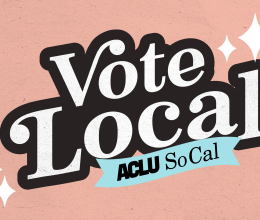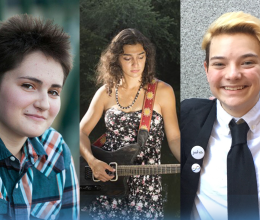
SAN FRANCISCO GATE:
By Nanette Asimov
Students say the bathrooms at Oakland High are messed up because they lack supplies, leak, or are always locked.
At Far West High in the same city, students complain of classrooms so crowded that they have to sit on tables.
Mice scurried across classroom floors for years at Grattan Elementary in San Francisco, while across town at Taylor Elementary the problem was rats.
Now students, teachers and parents have hope -- and a strong dose of skepticism -- that a new legal agreement between Gov. Arnold Schwarzenegger and lawyers for 1 million low-income students will keep problems like these from festering. The agreement, which the courts must still approve, addresses crumbling classrooms, teacher recruitment, the complaint process and more.
"It's a long overdue agreement, and we've been stressing it for four years," said 15-year-old Chip Johnson of Oakland, who will be a 10th-grader this fall at Far West.
As a low-income student, Johnson is among the California youngsters on whose behalf the American Civil Liberties Union sued the state four years ago in a class-action lawsuit. The students complained of being denied the same safe, well-functioning public schools enjoyed by middle-class students.
Known as the Williams case, named for one of the students, the suit came to symbolize a two-tiered education system: attractive, well-run schools for one group -- and broken-down schools with tattered texts for the other. Now, after spending nearly $20 million to fight the students, state officials have shaken hands with the ACLU and law firms representing the students.
The state has committed $188 million this year for new textbooks and repairing buildings at about 2,400 of the lowest-performing schools -- those scoring so low on state tests that they rank just 1, 2, or 3 on California's 10-point Academic Performance Index.
The state is also promising to reimburse low-performing schools for repairs in future years, said state sources who declined to comment publicly until the settlement is approved by the San Francisco judge handling the case.
Next week, legislation will be introduced in Sacramento to carry out the agreement. If lawmakers act on the bills by Aug. 31, when their session ends, the matter could move quickly to San Francisco Superior Court Judge Peter Busch for approval.
The plan calls for every classroom to post a sign telling students and teachers how to lodge a complaint about serious problems, and advising them of the school district's 30-day deadline to fix them. County superintendents would monitor compliance.
"I would definitely call and complain," said Johnson, whose first year at high school was marked by a class that kept switching subjects in midyear.
"It was biology," Johnson said. "Our so-called permanent substitute teacher left. As soon as the teacher left, the biology class became chemistry. We don't know why. Then that substitute left, and it became biology again."
Teacher turnover is a problem at many urban schools, and the new agreement includes a provision to help principals learn new techniques for recruiting and retaining good teachers.
Crummy bathrooms are another problem so pervasive that those opposing the students' lawsuit once asked sarcastically if state officials were supposed to become bathroom monitors with mops.
But Johnson said he likes the proposed new complaint process, with its deadline for repairs.
"I want teachers to pay attention to things like that," he said. "Kids go in the bathroom and stay there for like 30 minutes, painting graffiti and peeing on the floor.
Juan Munoz, also 15, called the agreement cool. Overcrowding is also a problem at Oakland High, he said, as are the plumbing and heating.
"I'd complain," he said. "It's the first thing I would do."
In San Francisco, school board President Dan Kelly said there are two good things about the new agreement: "It gets everyone talking about the problems, and it gets rid of the lawsuit."
Kelly said that although he is hopeful it will all work out, he doubts the state has committed enough money to make that happen. The dollars are supposed to come from "reversion funds" -- money unspent at year's end that would otherwise go back into the education budget.
"The reversion account doesn't have enough money in it to pay for facilities," Kelly said. "Taking money from programs and using it for facilities -- that's a problem."
Others agreed.
"The settlement amount is trivial," said Dave Fairley, whose son goes to Chavez Elementary in San Francisco, ranked "1."
He guessed the money amounts to less than $100 per student. "Compare that with the million-dollar bonuses that PG&E executives got from us ratepayers. This contrast says a lot about our society's values."
Eric Hanushek, a senior fellow at the conservative Hoover Institution at Stanford University, has said all along that the students' suit was wrongheaded. Hanushek was retained as an expert witness by Gray Davis who, as governor, battled the students in court.
Then, as now, Hanushek favored a reward system to entice better scores, and said that a better-cushioned nest does not help birds fly.
But even he had a good word for the new agreement:
"We certainly don't want to have unsafe or unsanitary schools where our kids are," he said. "And this could potentially help with that."
http://www.sfgate.com/cgi-bin/article.cgi?file=/chronicle/archive/2004/08/12/BAGJ086K491.DTL






